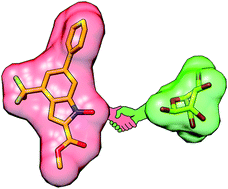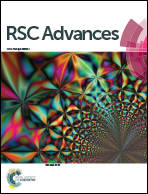Synthesis and biological evaluation of non-glucose glycoconjugated N-hydroyxindole class LDH inhibitors as anticancer agents†
Abstract
Inhibitors of human lactate dehydrogenase A (LDH-A) are promising therapeutic agents against cancer. The development of LDH-A inhibitors that possess cellular activities has so far proved to be particularly challenging, since the enzyme's active site is narrow and highly polar. In the recent past, we were able to develop a glucose-conjugated N-hydroxyindole-based LDH-A inhibitor designed to exploit the sugar avidity expressed by cancer cells (the Warburg effect). Herein we describe a structural modulation of the sugar moiety of this class of inhibitors, with the insertion of α-D-mannose, β-D-gulose, or β-N-acetyl-D-glucosamine portions in their structures. Their stereospecific chemical synthesis, which involves a substrate-dependent stereospecific glycosylation step, and their biological activity in reducing lactate production and proliferation in cancer cells are reported. Interestingly, the α-D-mannose conjugate displayed the best properties in the cellular assays, demonstrating an efficient antiglycolytic and antiproliferative activity in cancer cells.


 Please wait while we load your content...
Please wait while we load your content...